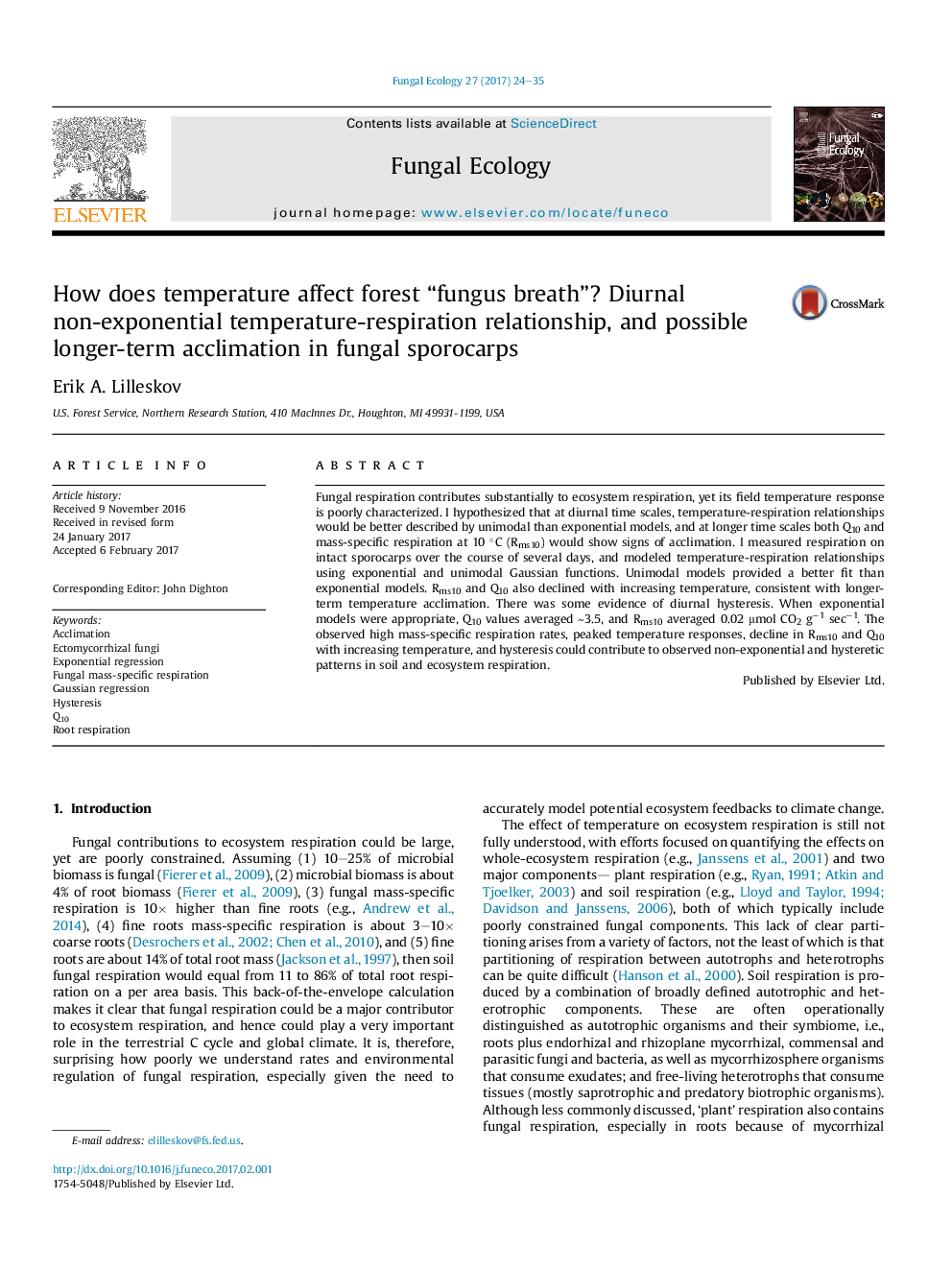| Article ID | Journal | Published Year | Pages | File Type |
|---|---|---|---|---|
| 5517686 | Fungal Ecology | 2017 | 12 Pages |
Fungal respiration contributes substantially to ecosystem respiration, yet its field temperature response is poorly characterized. I hypothesized that at diurnal time scales, temperature-respiration relationships would be better described by unimodal than exponential models, and at longer time scales both Q10 and mass-specific respiration at 10 °C (Rms10) would show signs of acclimation. I measured respiration on intact sporocarps over the course of several days, and modeled temperature-respiration relationships using exponential and unimodal Gaussian functions. Unimodal models provided a better fit than exponential models. Rms10 and Q10 also declined with increasing temperature, consistent with longer-term temperature acclimation. There was some evidence of diurnal hysteresis. When exponential models were appropriate, Q10 values averaged ∼3.5, and Rms10 averaged 0.02 μmol CO2 g−1 sec−1. The observed high mass-specific respiration rates, peaked temperature responses, decline in Rms10 and Q10 with increasing temperature, and hysteresis could contribute to observed non-exponential and hysteretic patterns in soil and ecosystem respiration.
